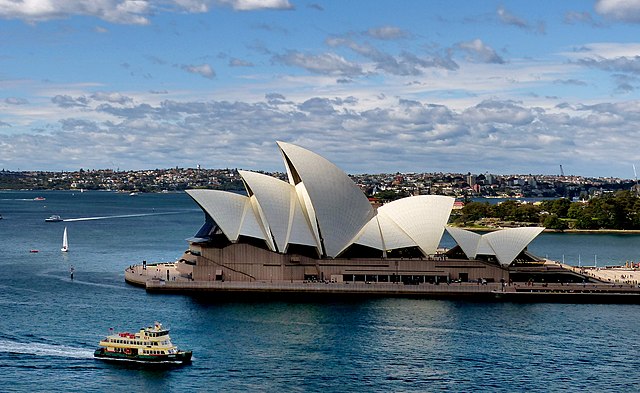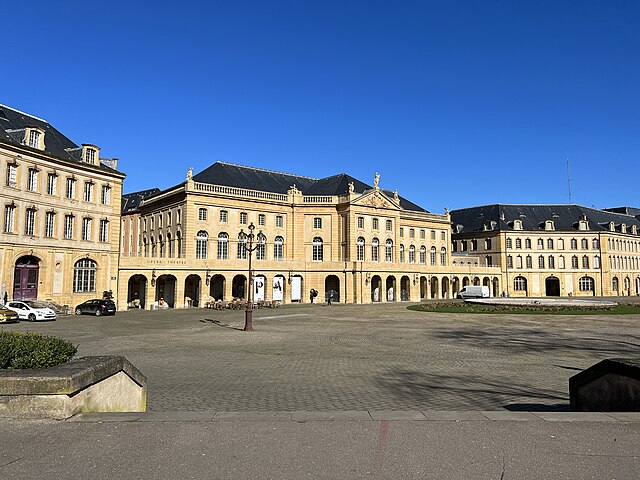The Palais Garnier, also known as Opéra Garnier, is a historic 1,979-seat opera house at the Place de l'Opéra in the 9th arrondissement of Paris, France. It was built for the Paris Opera from 1861 to 1875 at the behest of Emperor Napoleon III. Initially referred to as le nouvel Opéra de Paris, it soon became known as the Palais Garnier, "in acknowledgment of its extraordinary opulence" and the architect Charles Garnier's plans and designs, which are representative of the Napoleon III style. It was the primary theatre of the Paris Opera and its associated Paris Opera Ballet until 1989, when a new opera house, the Opéra Bastille, opened at the Place de la Bastille. The company now uses the Palais Garnier mainly for ballet. The theatre has been a monument historique of France since 1923.
View of the principal façade of the Palais Garnier from the Place de l'Opéra
Plan of the ground floor
Plan of the main floor
Plan at the auditorium ceiling level
An opera house is a theater building used for performances of opera. Like many theaters, it usually includes a stage, an orchestra pit, audience seating, backstage facilities for costumes and building sets, as well as offices for the institution's administration.
Teatro di San Carlo in Naples, the world's oldest working opera house.
The Sydney Opera House is one of the world's most recognisable opera houses and landmarks.
Opéra-Théâtre de Metz Métropole, built by benefactor Charles Louis Auguste Fouquet, duc de Belle-Isle during the 18th century; it is the oldest opera house working in France.
The Estates Theatre in Prague (Czech Republic) is the only theatre left standing where Mozart performed.








